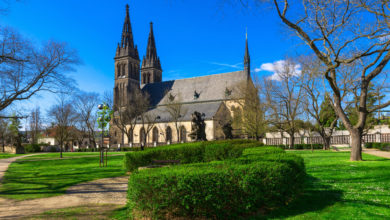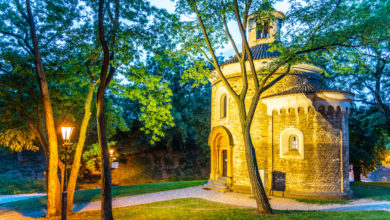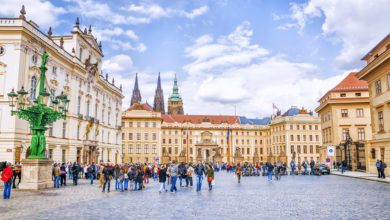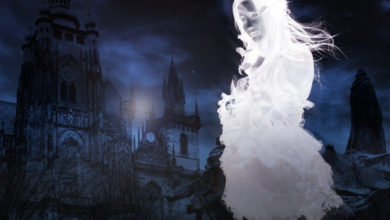Charles Bridge to Old Town Square Walk
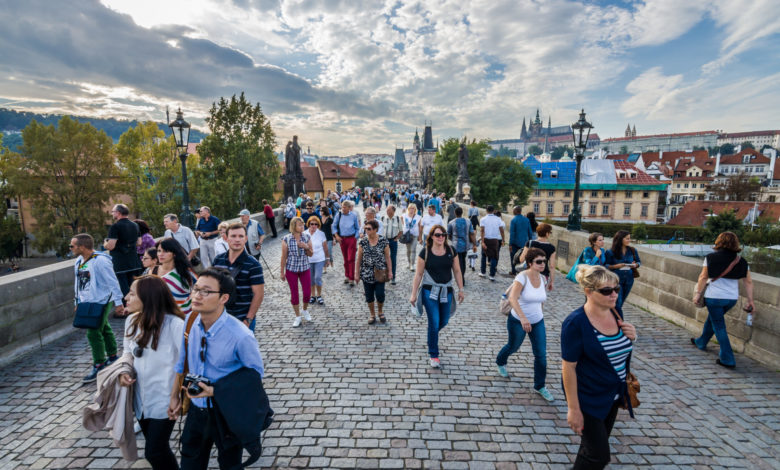
Many European cities were damaged, sometimes razed to the ground through disaster and conflict – not least by World War Two – Prague has been more fortunate. On glancing across the Vltava from its East Bank towards the Castle, it has been said by many that they feel they are in the pages of a fairytale book.
Prague’s Old Town is a mediaeval settlement, joined later by Charles IV’s New Town in the 14th century, transforming Prague into the third-largest city in Europe. Though its alias ‘the Golden City’ is often attributed to Prague’s stunning vistas when it catches the sunlight, the origin is a much more practical one. The city’s gold reserves used to be stored atop the roof of Prague Castle.
As Prague develops in the 21st century, it is forging its own modern identity. A prime example of this is the Dancing House, referred to affectionately as the Fred and Ginger Building, which teeters on the edge of the Vltava, by Jiráskův most.
1. Begin at the western end of Charles Bridge in Malá Strana (this means ‘Little Quarter or Lesser Town’). It’s now time to brace yourself for the city’s biggest tourist attraction. Looking at all the other bridges that span the Vltava today, it’s hard to believe that the Charles Bridge was, in fact, the only one to do so until 1841. From its completion at the start of the 15th century, you can imagine how busy the Bridge would have been – jam-packed with traders and their wares, making their way from the Lesser Quarter to the Old Town. Despite the multitude of ways to cross the river today, the Charles Bridge remains as busy as it ever was.
2. As you force your way through the happy snappers, buskers and hucksters (that is, unless you’ve managed to get up at dawn and beat the rush), try to work your way up one of the sides, each of which is lined with the baroque statues of saints. The original statues were introduced onto the Bridge during the beginning of the 18th century, although all have now been replaced with facsimiles. In particular, keep an eye out for the figure of St John Nepomuk, who was thrown into the river and killed by order of King Wenceslaus in 1393. It is said that if you touch the golden plaque at the statue’s base, you’ll have good luck. So feel free to join the queue of superstitious tourists and see if it works.
3. As you eventually wend your way to the other side of the Bridge, no doubt have enjoyed a little alfresco music and laughed at some of the caricatures bring sketched along the way, you’ll reach the Old Town Bridge Tower. Like the Powder Tower in Náměstí Republiky, this used to be part of the Old Towns’ fortifications. Yet despite its practical means, the Gothic-style ornamentation means this building is deemed one of the most astounding of its kind. Look upwards as your pass through its passageway and marvel at its 14th-century murals.
4. Coming out of the Bridge Tower to your left is the Church of St Francis Seraph – often overlooked due to its being surrounded by so many other historical structures. It belonged to the Order of the Knights of the Cross with a Red Star and was founded by St. Agnes of Bohemia in 1233. The monastery hospital is now located in an exhibition space that displays a fragment of the Judith Bridge. This stood in place of Charles Bridge until 1342.
5. Crossing Křižovnická and heading down Karlova, you’ll be forgiven for thinking this street has been spoiled by the congregation of souvenir shops and overpriced goulash restaurants. Closer inspection, however, reveals vestiges of history, one of which lies at the address 188/4. This is the former home of Johannes Kepler, the German mathematician and astronomer. Kepler established the laws of planetary motion on this very site. As the street opens up into Liliova, you will come across the erstwhile apothecary U zlaté studně (At the Golden Well), which is ornamented with the faces of plague healers St Sebastian (left) and St Roch. If this catches your interest, consider visiting the plague memorial situated a little further to the south on the East Bank.
6. Taking a left turn through the archway in the north wall of the square will find you on the grounds of the Clementinum, which currently forms the home of the Czech Republic’s National Library. Its name derives from the chapel of St Clement, which originally stood on the site. Since then, the area hosted a Dominican monastery, a Jesuit college, and an observatory. The Clementinum is mentioned in Jorge Luis Borges’ The Secret Miracle.
7. As you snake your way through the Clementinum’s grounds and pass through an exiting archway, you’ll arrive out onto Mariánské náměstí. Directly in front of you is Prague City Hall, home to the city’s mayor, and to your left, Prague City Library, on top of which you can make statues representing the various academic subjects. A small oasis of calm between the Charles Bridge and the Old Town Square, there can be something eerie about Mariánské náměstí, especially at night. Perhaps it is has something to do with a constant gentle trickle of water emanating from the statue of a girl in one corner of the Square. Alternatively, it could be the black, armoured figure that stood to the left of the City Hall. Finally, it is that of the Iron Night –an accursed character who is said to come to life every 100 years and haunt the streets, seeking out virgins.
8. With the City Hall still in front of you, bear right onto Husova, the most interesting site of the Clam-Gallas Palace, built by the Italian architect Domenico Canevale. The weight of the entire palace appears to be borne by two stone giants, their carved muscles forever strained. During the 18th century, Clam-Gallas was the venue for many lavish concerts, two of the most remembered ones by Mozart and Beethoven. A little further up along the street on your left is the Church of St Giles, from outside which somebody will undoubtedly shove a flyer in your hand, promoting a classical concert. One of the church’s notable preachers was Jan Milíč of Kroměříž, a leading advocate of the Pre-Hussite Reformation.
9. In fact, this area is rich in Hussite history, and as you may have already elicited, Husova is named after the religious reformer Jan Hus. The reason for this is that Hus once preached at the Bethlehem Chapel, which you will find in Betlémské náměstí, off to the right just before you reach the end of Husova. Even though the building can hold up to 3,000 people, it never earned the title of ‘church’. When Hus was excommunicated in 1412, the Pope ordered for Bethlehem Chapel to be pulled down, but the Old Town council bluntly ignored this, so it is them we have to thank for its existence today.
10. Heading back onto Husova, on looking up, your heart may skip a beat when you see a man dangling off the edge of a building. Fear not – this is not a suicide attempt, nor a workman in peril – it is an artwork by rebellious Czech sculptor David Černý. On closer inspection, the statue resembles an uncanny likeness to Sigmund Freud. If you like the cut of Černý’s jib, you’d be advised to seek out some of his other artworks, which include a couple of statues relieving themselves into a Czech Republic-shaped trough outside the Franz Kafka Museum and a group of huge, faceless babies scaling the pillars of the Žižkov Television Tower.
11. Follow Skořepka street up to Uhelný trh (this translates as coal market, which is exactly what this site used to be). If you fancy rewarding yourself with a glass of good Moravian wine, take a cheeky detour down Michalská, where you will discover a close-knit collection of bars that comes alive every weekday afternoon with the sounds of guitar-strumming and slightly-sozzled locals. If you’re there at the right time of year, you might also get to taste the legendary burchak, a cloudy drink made from the first harvest of grapes. Otherwise, cross Uhelný trh onto Havelská, pick up a souvenir of your walk at its flea market, and bear left onto Melantrichova, which will feed you all the way through to the Old Town Square.
This tour can be walked on your own (self-guided tour), or we can arrange for you a professional English-speaking guide. The tour guide can even tailor this walk to your special needs. For example, recommend a place to stop for lunch, including a river cruise or tram ride if you are tired walking, etc. The guide can pick you up at your hotel, or you can arrange to meet anywhere in the city. Please email us your details for a price quote.

